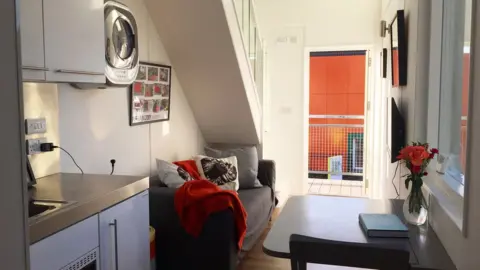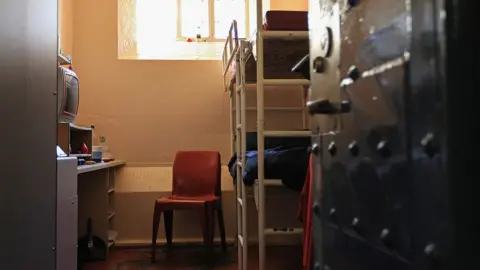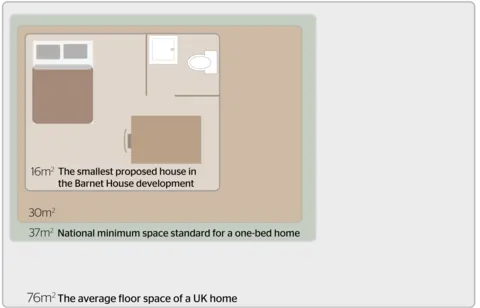Would you live in a home the size of a Tube carriage?
 Zedpods
ZedpodsThe UK has seen a sharp rise in homes little bigger than a budget hotel room, according to consumer group Which?.
The number of newly built micro-homes, which are smaller than 37 sq m - the size of a Tube carriage - rose 40% in the UK last year, the group found.
They are often cheaper than traditional homes, but Which? warned that buyers could struggle to get a mortgage.
Industry experts put the growth down to the housing shortage and the difficulties facing first-time buyers.
Which? found examples of micro-homes of less than 28 sq m - the size of an average Travelodge hotel room - on sale in London for as much as £450,000.
The smallest apartment it found was in Brent, measuring just 8 sq m - only 1 sq m larger than a prison cell. Brent Council is understood to be investigating the property, which is not newly built.
 Getty Images
Getty ImagesDavid Blake, principal mortgage adviser at Which? Mortgage Advisers, said: "With the average London micro-property selling for £279,000, smaller homes can represent a more realistic opportunity for many - but can also be harder to mortgage."
Which? found that Nationwide and RBS would not lend on properties with floor areas smaller than 30 sq m.
Mr Blake said: "Smaller properties can put lenders off due to concerns around the future value of the investment. However, there are mortgage lenders who are receptive to properties of this nature, if demand is high enough and sustainable."
Properties smaller than 37 sq m rose in value by 6.9% in the last three years, compared with 8.7% for homes larger than that, Which? found.
'Find the space'
About 7,800 micro-homes were built last year, up from 5,605 in 2015, helped by changes introduced in 2013 that allowed developers to convert city centre office blocks into flats.
Two thirds of the properties Which? looked at were in London - including Barnet House, which offers flats as small as 16 sq m.
 Which?
Which?But micro-homes are not only a feature of the crowded London housing market.
Hundreds have been built in cities like Leicester, Liverpool and Birmingham in the past three years. Which? found flats in Leicester measuring 22 sq m that were on sale for £70,000.
The UK already has some of the smallest homes in Europe, at an average of 76 sq m. By comparison, the average size of a property in Denmark is 137 sq m, according to research published in 2014 by Find Me A Floor.
A micro-home has no hard-and-fast definition, but is typically smaller than 37 sq m - the minimum size for a studio under government standards.
John O'Brien, a director at housing charity BRE, said micro-homes could be "part of the solution" to the housing shortage.
"We've got to build two million more homes so have got to find the space somewhere," he said.
One option that BRE has explored are Zedpods - flats that can be built above car park spaces - for key workers and single-person households.
 Zedpods
ZedpodsAlistair Smyth, head of policy at the National Housing Federation, also said smaller homes could deal with the lack of housing, particularly for first-time buyers.
"For many, buying a home has become an aspiration impossible to fulfil," Mr Smyth said.
"This is a problem that is decades in the making; as a nation we are simply not building enough homes."
The government has said it will review space standards to "ensure greater local housing choice, while ensuring we avoid a race to the bottom in the size of homes on offer".

